Radar Level Measurement Comparison between 26GHz Pulse & 80GHz FMCW
Radar level transmitters, operating at 26 GHz pulse and 80 GHz FMCW frequencies, offer distinct advantages in level measurement applications, with the choice between them depending on specific requirements such as beam width, resolution, and penetration depth.
The 80 GHz sensors provide higher resolution and narrower beam width, while 26 GHz sensors offer wider coverage and deeper penetration, making each suitable for different industrial scenarios.

Principles
Basic principle of 26GHz Pulse Radar Level Transmitter
The 26 GHz pulse radar level transmitter operates on the principle of time-of-flight (TOF) measurement, utilizing short bursts of high-frequency electromagnetic waves to determine liquid or solid material levels in various industrial applications.
This technology emits narrow microwave pulses at 26 GHz frequency, which are transmitted downward through an antenna.
The basic operating principle involves the following steps:
- Pulse emission: The transmitter generates short, high-energy pulses of microwave radiation at 26 GHz.
- Signal propagation: These pulses travel through the antenna and are directed towards the surface of the material being measured.
- Reflection: Upon reaching the material's surface, the microwave pulses are reflected back towards the transmitter.
- Time measurement: The device precisely measures the time taken for the pulse to travel to the surface and return.
- Level calculation: Using the known speed of electromagnetic waves and the measured time, the transmitter calculates the distance to the material's surface, thus determining the level.
Key features of 26 GHz pulse radar level transmitters include:
- Long-range capability: These devices can measure levels up to 80 meters, making them suitable for tall tanks or silos.
- Versatility: They can be used for both liquid and solid materials across various industries.
- Non-contact measurement: The radar technology allows for accurate level measurement without direct contact with the medium, preserving the integrity of both the sensor and the measured material.
- Resistance to environmental factors: Pulse radar transmitters perform well in challenging conditions such as dust, vapor, or foam.
The 26 GHz frequency offers a balance between penetration capability and measurement accuracy, making it a popular choice for many industrial level measurement applications.
The optimized antenna design further enhances the performance of these transmitters, allowing for reliable measurements in complex tank geometries.
Basic principle of 80GHz FMCW Radar Level Transmitter
The 80 GHz Frequency Modulated Continuous Wave (FMCW) radar level transmitter operates on a fundamentally different principle compared to pulse radar systems.
This advanced technology utilizes a continuously emitted signal with varying frequency to measure material levels with high precision.The basic operating principle of an 80 GHz FMCW radar level transmitter involves:
- Signal emission: The transmitter emits a continuous microwave signal at 80 GHz, typically within the 76-81 GHz range.
- Frequency modulation: The emitted signal's frequency is continuously modulated, usually in a linear sweep pattern.
- Signal propagation: The modulated signal travels through the antenna towards the material surface.
- Reflection: Upon reaching the material's surface, the signal is reflected back to the transmitter.
- Signal analysis: The device compares the frequency of the returned signal with the currently transmitted frequency.
- Level calculation: The frequency difference between transmitted and received signals is used to calculate the distance to the material surface, determining the level.
Key features of 80 GHz FMCW radar level transmitters include:
- High accuracy: The higher frequency and FMCW technology allow for extremely precise measurements, often with accuracy down to millimeters.
- Narrow beam angle: The 80 GHz frequency produces a highly focused beam, enabling measurements in narrow tanks or through small openings.
- Excellent performance in challenging conditions: These transmitters can effectively measure levels even in the presence of dust, vapor, or turbulence.
- Short dead band: The high frequency allows for measurements very close to the sensor, reducing the non-measurable area near the transmitter.
- Immunity to interference: FMCW technology is less susceptible to interference from tank internals or other radar devices.
The 80 GHz FMCW technology is particularly well-suited for applications requiring high precision, such as in the chemical, pharmaceutical, or food and beverage industries.
The narrow beam and advanced signal processing capabilities make these transmitters ideal for complex tank geometries or materials with low dielectric constants.
Features
Beam Width Comparison in Radar
The beam width of radar level transmitters plays a crucial role in their performance and suitability for various applications.
When comparing 26 GHz and 80 GHz radar systems, significant differences in beam width become apparent, impacting their effectiveness in different scenarios.80 GHz radar systems offer a notably narrower beam width compared to their 26 GHz counterparts.
The wavelength of an 80 GHz radar is only 3.75 mm, while a 26 GHz radar has a wavelength of 11.5 mm.
This shorter wavelength results in a more focused and narrow beam for 80 GHz systems.
The narrower beam of 80 GHz radars provides several advantages:
- Improved measurement accuracy in complex tank geometries
- Reduced interference from tank walls and internal structures
- Better performance in narrow tanks or when measuring through small openings
- Enhanced ability to avoid obstacles and measure the true level of the medium
For instance, at a distance of 10 meters, the beam width of an 80 GHz radar with 4 GHz bandwidth is only 30% as wide as that of a 24 GHz radar with 2 GHz bandwidth.
This significant difference in beam width translates to a measurement area of approximately 0.5 m for the 80 GHz radar compared to 1.75 m for the 24 GHz radar at the same distance.
In contrast, 26 GHz radar systems have a wider beam width, which offers its own set of advantages:
- Ability to measure a larger area with a single measurement
- Better performance in applications with uneven or turbulent surfaces
- Increased likelihood of detecting the true level in tanks with agitators or other moving parts
The wider beam of 26 GHz radars can be beneficial in certain scenarios, such as measuring bulk solids or in applications where a larger measurement area is desired.
However, this wider beam may also lead to increased interference from tank walls or internal structures in some cases.
It's worth noting that the beam width can be influenced by antenna design as well as frequency.
For example, the Autrol ALT6210, a 26 GHz pulse radar level transmitter, features a narrow and straight beam angle of 10°, demonstrating that antenna optimization can help mitigate some of the beam width limitations associated with lower frequencies.
When selecting between 26 GHz and 80 GHz radar systems, engineers must carefully consider the specific requirements of their application, taking into account factors such as tank geometry, medium characteristics, and desired measurement precision to determine which beam width profile best suits their needs.
Impact of Frequency on Accuracy
The frequency of radar level transmitters plays a crucial role in determining their measurement accuracy, with higher frequencies generally offering improved precision and resolution.
This relationship between frequency and accuracy stems from several key factors:Wavelength and Resolution: Higher frequency radar systems operate with shorter wavelengths, allowing for more precise detection of small changes in level.
For instance, 80 GHz radar sensors, with their shorter wavelength of 3.75 mm, can detect higher resolution levels compared to 26 GHz sensors with an 11.5 mm wavelength.
This increased resolution translates to more accurate measurements, especially in applications requiring fine-grained level detection.
Signal Bandwidth: Higher frequency radar systems typically employ wider signal bandwidths, which contribute to improved measurement accuracy. For example, a 24 GHz radar usually modulates between 24 and 26 GHz, providing a bandwidth of 2 GHz, while an 80 GHz radar modulates between 78 and 82 GHz, offering a 4 GHz bandwidth.
The wider bandwidth allows for more precise time-of-flight measurements, resulting in enhanced accuracy.Beam Angle and Focus: Higher frequency radars produce narrower, more focused beams.
This characteristic reduces interference from tank walls and internal structures, leading to more accurate measurements, particularly in complex tank geometries.
The narrower beam of 80 GHz radars, for instance, allows for more precise targeting of the material surface, minimizing false readings from surrounding obstacles.
Signal-to-Noise Ratio: At higher frequencies, radar systems can send and receive more signals in a given time frame, associating them more clearly with the target due to narrower, precise peaks.
This improved signal-to-noise ratio contributes to enhanced measurement accuracy, especially in challenging environments with potential interference.
Penetration and Performance: While higher frequencies generally offer better accuracy, it's important to note that lower frequencies like 26 GHz can penetrate certain materials more effectively, such as dust, steam, or foam.
This penetration capability can be crucial for maintaining accuracy in specific industrial applications where these factors are prevalent.
Distance Range: The relationship between frequency and accuracy is also influenced by the measurement distance. In relative terms, lower frequency bands can measure longer distance ranges, while higher frequency bands are better suited for shorter distance ranges with higher accuracy.
This trade-off must be considered when selecting the appropriate radar frequency for a given application.It's worth noting that while frequency is a significant factor in determining radar accuracy, other elements such as antenna design, signal processing algorithms, and installation conditions also play important roles in overall measurement performance.
Therefore, the selection of radar frequency should be based on a comprehensive evaluation of the specific application requirements, balancing accuracy needs with other performance factors.
Product Information
Please feel free to ask us if you have any questions
or you want our support. ⇩⇩⇩
© Matsushima Measure Tech Co., Ltd.



